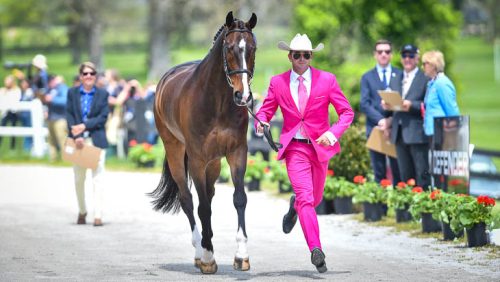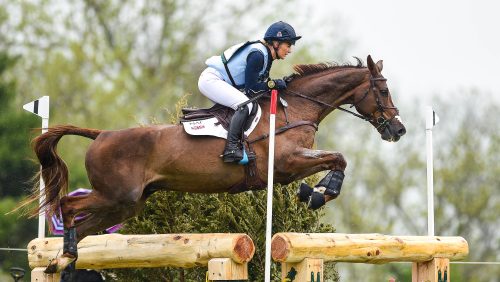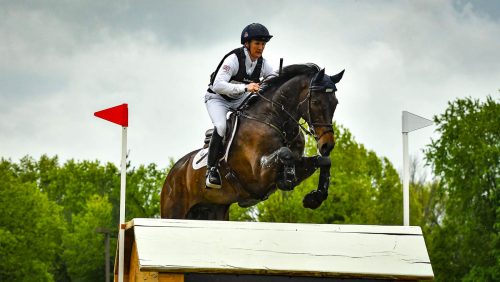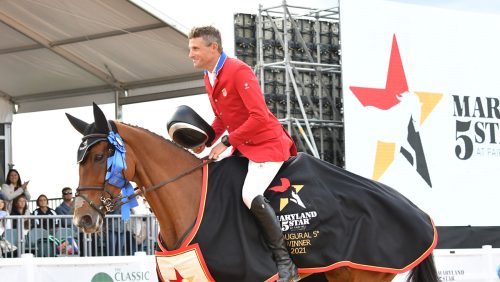Gladstone, N.J.—June 21
While the race for the next president of the United States rages across the nation, another presidential election quietly took place in the hallowed halls of the U.S. Equestrian Team headquarters. The U.S. Equestrian Federation Nominating Committee put forth Murray Kessler as their pick from 13 candidates who were nominated—although only two were interested in the position—and the USEF board of directors elected Kessler with no discussion or drama at their mid-year meeting.
The retired businessman, amateur competitor, and father of Olympic show jumper Reed Kessler was enthusiastic about combining his professional skills with his equestrian knowledge to lead the USEF. Directly after the election he presented his strategic plan—a document he’s taken the lead on formulating at the request of current USEF President Chrystine Tauber—to the board of directors.
“There are 160 pages of actions and things that need to be addressed to bring the joy of horse sports to as many people as possible,” said Murray. “I am hoping I can change the federation from a place where people join because the have to, to a place they join because they want to. [The strategic plan] has to address every level of the organization.”
Interim USEF CEO Bill Moroney, who has been on a leave of absence from his role as U.S. Hunter Jumper Association president since January when he took on the interim role, accepted a permanent position as well.
“We have a great team here,” said Tauber, who will step down at the 2017 USEF Annual Meeting. “I’m just thrilled. I think we have a very bright future for the federation.”
But the election wasn’t the only action from the mid-year meeting. Here’s what you need to know:
ADVERTISEMENT
– A rule change regarding isolation protocol, GR 1211.5, was passed after being referred from the January meeting. The crux of this rule is that show managers must have a plan in the case of an infectious disease outbreak on their showgrounds, and they must provide that plan to their officials and key staff.
“It’s going to be very simple in the beginning because we have a lot to learn still,” said Bob Bell, show manager and chairman of the Competition Management Committee. “It’s very much like our accident preparedness plan. It started out as one line. Now it’s a whole page.
“There are 350 show managers in the country,” he added. “They are worrying about running their horses shows. They’re not worried about isolation. They’re not thinking about it until it happens, and it’s too late then.”
– Hearing Committee co-chair Judy Werner gave an informational lecture to the board on how the USEF hearing and penalty process works. They’ve streamlined the committee and removed people who only showed up in order to help their friends out. “We all take an oath that we will be fair minded and confidential. I don’t want somebody on the hearing panel to go to the next horse show and tell what went on,” she said.
But she admitted the process could still be improved. “The findings are being expanded in the magazine,” she said. “We have expanded who we can question. Some of these larger barns had assistant trainers. We talked about suspending the horse. We have that ability already in the rules.”
And she lamented that a major case can still take more than 240 days from notification letter to hearing date. “All of the large cases have legal representation. They ask for continuances. They work within our rules to get this done, and this is frustrating to me,” she said.
She also explained how thoroughly cases are examined before they actually make it to a hearing. Of 104 drug positives in 2015, only 15 went through a hearing.
ADVERTISEMENT
– The USEF is undefeated in the courts when it comes to defending the decisions of the Hearing Committee. Two cases are currently still in litigation. One was a September 2015 ruling suspending Archie Cox for five months after a horse he showed, Meredith Mateo’s Cartaire, was found to have “been administered and/or contained in its body gamma aminobutyric acid (GABA) in excess of normal physiological levels.” The other is a licensed official who is challenging a denial of promotion.
– Since 1999, the Hearing Committee has heard 98 welfare/abuse cases, and 86 of those were the result of human loss of temper. Elisabeth Goth, who headed up the Horse Welfare Initiative Task Force, presented those numbers and discussed the difficulty in penalizing this behavior when eye witnesses won’t testify, and stewards don’t properly record what happened.
“Abuse cases are so hard on the Hearing Committee,” agreed Werner. “Witnesses won’t show up. There is no video. We rely on the steward’s report. When it’s not on the steward’s report, what proof do we have? No witnesses, no video, a steward’s report that doesn’t mention it—it’s tough!”
The board of directors discussed heftier fines, promoting the use of cell phone video to record an incident, educating stewards, and implementing a “chief” steward system, where some stewards are certified and paid through the federation.
–From 2003-2012, more than 18,000 people were admitted to trauma centers with sports-related traumatic brain injuries. Of that number, 45 percent were equestrians. Those numbers made the board of directors sit up and take notice when Dr. Lola Chambless presented them.
However, there is a 50 percent risk reduction for TBI when a rider is wearing a helmet. Chambless listed four key points for how to reduce these injuries, which included: teaching medical personel and even laymen how to do better concussion assessment, improving return-to-play guidelines, pressuring helmet manufacturers to improve, and educating people to wear their helmets.















